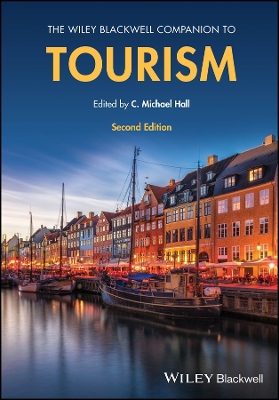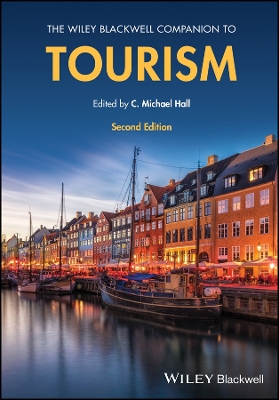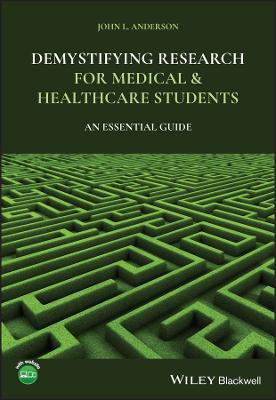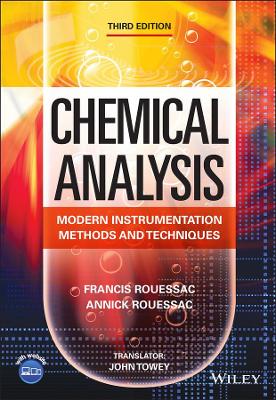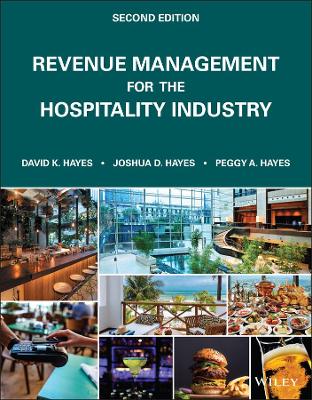Planning an Applied Research Project in Hospitality, Tourism, and Sports
 -15%
portes grátis
-15%
portes grátis
Planning an Applied Research Project in Hospitality, Tourism, and Sports
Mayo, Frederic B.
John Wiley & Sons Inc
02/2014
272
Mole
Inglês
9781118637227
15 a 20 dias
370
Descrição não disponível.
Preface x
Chapter 1 Reading and Analyzing Research 1
Introduction 1
Industry Articles and Reports 1
White Papers 2
Definition of a Scholarly Journal Article 4
Sport Management Memos 8
Locations of Scholarly Articles 8
Quantitative versus Qualitative Research 10
Structure of Scholarly Articles 12
Structure of Quantitative Articles 14
Structure of Qualitative or Theoretical Articles 14
Structure of Research Reports or Studies 15
Evaluating Scholarly Articles 16
Summary 21
Key Terms 21
Works Cited in This Chapter 21
Chapter 2 Developing an Interest or Topic 23
Introduction 23
Ways to Find Topics: Your Manager or Your Professor 23
Ways to Find Topics: Review of Past Reading 24
Ways to Find Topics: New Reading 24
Ways to Find Topics: Interviewing 25
Ways to Find Topics: Brainstorming 26
Ways to Find Topics: Conversing 26
Ways to Find Topics: Faculty Suggestions 26
Clarifying and Selecting Areas of Interest 27
Cognitive Mapping 28
Purpose Statements 30
Types of Research 31
Importance of a Purpose Statement 32
Developing Research Questions 32
Purpose Statements and Problem Statements 36
Criteria for Effective Purpose Statements 37
Summary 38
Key Terms 38
Works Cited in This Chapter 38
Chapter 3 Conducting a Literature Review 39
Introduction 39
Definition of a Literature Review 39
Purposes of a Literature Review 42
Finding Scholarly Articles 44
Order of Reading Scholarly Journal Articles 46
What to Look for When Reading Articles 48
Research Methods 49
Taking Notes as You Read 50
Evaluating Articles 52
Preparing an Annotated Bibliography 53
Making a Literature Review Effective and Interesting to Do 55
Summary 56
Key Terms 57
Works Cited in This Chapter 57
Chapter 4 Reviewing and Revising your Purpose Statement 60
Introduction 60
Reasons for Revising Purpose Statements 60
Importance and Significance of a Purpose Statement 62
Purpose Statement and Supporting Dimensions 62
Process of Reviewing and Revising 64
Criteria for a Good Purpose Statement 66
Refocusing the Research 67
A Flexible Process 67
Doping in the Tour De France-Changing Impossible to Attainable 68
Locally Grown Food-from Behavior to Modifi cation 69
Servicescape to Self-Service Technology 70
Product Placement in Video Games 71
Final Thoughts 72
Summary 73
Key Terms 73
Works Cited in This Chapter 73
Chapter 5 Writing a Literature Review 74
Introduction 74
Purposes of a Completed Literature Review 75
Audience 78
Voice and Tone 79
The Perspective of a Literature Review 80
Constructing the Written Literature Review 82
Criteria for a Good Literature Review 83
Summary 84
Key Terms 85
Works Cited in This Chapter 85
Chapter 6 Forms of Qualitative Research 87
Introduction 87
Differences Between Qualitative and Quantitative Research 87
Purposes of Qualitative Research 89
Primary and Secondary Data 90
Types of Qualitative Research 91
Biographies and Histories 92
Case Studies 92
Conceptual Overviews or Reports of the Field 93
Content Analysis 94
Ethnographical Studies 95
Grounded Theory 95
Phenomenology 96
Program Evaluations 97
Advocacy Paper or Feasibility Study 98
Analyzing Information in Qualitative Research 98
Summary 99
Key Terms 100
Works Cited in This Chapter 100
Chapter 7 Forms of Quantitative Research 102
Introduction 102
Purposes of Quantitative Research 103
Types of Quantitative Research 105
Survey Research 105
Experimental Research 106
Post-Hoc Research 108
Developmental Research 109
Forecasting 110
Role of Hypotheses 112
Overcoming Confounding Variables 114
Determinations of Signifi cance 115
Mixed Methods 116
The Research Hourglass 118
Summary 119
Key Terms 120
Works Cited in This Chapter 120
Chapter 8 Sampling Issues in Research 122
Introduction 122
Reasons for Sampling 123
Strategies for Selecting a Sample 124
Sample Selection Process 125
Sampling Strategies 125
Probability Sampling Strategies 126
Non-Probability Sampling Strategies 128
Sources of Sampling Bias: Systemic Bias 131
Sources of Sampling Bias: Respondent Bias 132
Sources of Sampling Bias: Interviewer Bias 133
Sample Size 135
Summary 136
Key Terms 136
Works Cited in This Chapter 137
Chapter 9 Validity, Reliability, and Credibility in Research 138
Introduction 138
Credibility 138
Validity 139
Dependent and Independent Variables 140
Internal Validity 142
Forms of Instrument Validity 143
External Validity 146
Threats to External Validity 147
Reliability 148
Selecting a Research Design 149
Suggestions to Ensure Validity and Reliability 150
Summary 151
Key Terms 151
Works Cited in This Chapter 151
Chapter 10 Research Techniques-Interviews 153
Introduction 153
Using Interviews 153
Formats of Interviews 156
The Interview Protocol 157
Contacting the Interviewee 160
Preparing for the Interview 161
Stages of a Research Interview 163
Unusual Interview Formats 166
Group Interviews 166
Door-to-Door Interviews 167
Follow Up Interviews 168
Summary 168
Key Terms 169
Works Cited in This Chapter 169
Chapter 11 Research Techniques-Questionnaires 171
Introduction 171
Purposes of Questionnaires 171
Types of Questionnaires 173
Advantages and Disadvantages 175
Developing Questionnaires 176
Types of Questions 178
Electronic Questionnaires 181
Sequencing Questions 182
Demographic Data 182
Questionnaire Administration 183
Questionnaire Presentation 185
Privacy and Permission 186
Incentives 188
Summary 188
Key Terms 188
Works Cited in This Chapter 189
Chapter 12 Research Techniques: Observations, Focus Groups, and Other Techniques 191
Introduction 191
Benefits of Observational Research 191
Bias in Conducting Objective Observations 193
Challenges and Recommendations for Conducting Objective Observations 194
Observational Roles 196
Focus Groups 199
Benefits of Focus Groups 199
Challenges and Recommendations for Conducting Focus Groups 200
Size of Focus Groups 202
Expert Panels 202
Benefits of Expert Panels 203
Challenges and Recommendations in Conducting
Expert Panels 204
Content Analysis 205
Benefits of Content Analysis 206
Challenges and Recommendations in Using Content Analysis 207
Coding in Content Analysis 209
Summary 210
Key Terms 211
Works Cited in This Chapter 211
Chapter 13 Analyzing Data and Other Information 213
Introduction 213
Steps in Analyzing Information 213
Collecting the Information 214
Immersing Yourself in the Data 215
Coding Data for Privacy and Record Keeping 217
Reviewing the Research Questions or Objectives 218
Organizing and Sorting Information 218
Identifying Relationships and Patterns 219
Quantitative Analysis of Patterns 221
Qualitative Analysis of Patterns 222
Reviewing the Data 223
Interpreting the Findings 224
Displaying Information 226
Significance 228
Summary 229
Key Terms 229
Works Cited in This Chapter 229
Chapter 14 Writing a Research Proposal 231
Introduction 231
Reasons for a Proposal 231
Elements of a Proposal 233
Audience and Point of View 237
Prefatory Documents 238
Executive Summary 238
Tips for Writing an Executive Summary 239
Other Supporting Documents 240
Introduction and Conclusion 241
Criteria for a Good Research Proposal 242
Summary 244
Key Terms 245
Works Cited in This Chapter 245
Appendix A Writing an Annotated Bibliography 246
The following Appendices are available at www.wiley.com/college/mayo
Appendix B Refereed Scholarly Journals
Appendix C Hospitality, Tourism, and Sports Websites
Appendix D Bibliographical Tools
Appendix E Popular Databases
Index 255
Chapter 1 Reading and Analyzing Research 1
Introduction 1
Industry Articles and Reports 1
White Papers 2
Definition of a Scholarly Journal Article 4
Sport Management Memos 8
Locations of Scholarly Articles 8
Quantitative versus Qualitative Research 10
Structure of Scholarly Articles 12
Structure of Quantitative Articles 14
Structure of Qualitative or Theoretical Articles 14
Structure of Research Reports or Studies 15
Evaluating Scholarly Articles 16
Summary 21
Key Terms 21
Works Cited in This Chapter 21
Chapter 2 Developing an Interest or Topic 23
Introduction 23
Ways to Find Topics: Your Manager or Your Professor 23
Ways to Find Topics: Review of Past Reading 24
Ways to Find Topics: New Reading 24
Ways to Find Topics: Interviewing 25
Ways to Find Topics: Brainstorming 26
Ways to Find Topics: Conversing 26
Ways to Find Topics: Faculty Suggestions 26
Clarifying and Selecting Areas of Interest 27
Cognitive Mapping 28
Purpose Statements 30
Types of Research 31
Importance of a Purpose Statement 32
Developing Research Questions 32
Purpose Statements and Problem Statements 36
Criteria for Effective Purpose Statements 37
Summary 38
Key Terms 38
Works Cited in This Chapter 38
Chapter 3 Conducting a Literature Review 39
Introduction 39
Definition of a Literature Review 39
Purposes of a Literature Review 42
Finding Scholarly Articles 44
Order of Reading Scholarly Journal Articles 46
What to Look for When Reading Articles 48
Research Methods 49
Taking Notes as You Read 50
Evaluating Articles 52
Preparing an Annotated Bibliography 53
Making a Literature Review Effective and Interesting to Do 55
Summary 56
Key Terms 57
Works Cited in This Chapter 57
Chapter 4 Reviewing and Revising your Purpose Statement 60
Introduction 60
Reasons for Revising Purpose Statements 60
Importance and Significance of a Purpose Statement 62
Purpose Statement and Supporting Dimensions 62
Process of Reviewing and Revising 64
Criteria for a Good Purpose Statement 66
Refocusing the Research 67
A Flexible Process 67
Doping in the Tour De France-Changing Impossible to Attainable 68
Locally Grown Food-from Behavior to Modifi cation 69
Servicescape to Self-Service Technology 70
Product Placement in Video Games 71
Final Thoughts 72
Summary 73
Key Terms 73
Works Cited in This Chapter 73
Chapter 5 Writing a Literature Review 74
Introduction 74
Purposes of a Completed Literature Review 75
Audience 78
Voice and Tone 79
The Perspective of a Literature Review 80
Constructing the Written Literature Review 82
Criteria for a Good Literature Review 83
Summary 84
Key Terms 85
Works Cited in This Chapter 85
Chapter 6 Forms of Qualitative Research 87
Introduction 87
Differences Between Qualitative and Quantitative Research 87
Purposes of Qualitative Research 89
Primary and Secondary Data 90
Types of Qualitative Research 91
Biographies and Histories 92
Case Studies 92
Conceptual Overviews or Reports of the Field 93
Content Analysis 94
Ethnographical Studies 95
Grounded Theory 95
Phenomenology 96
Program Evaluations 97
Advocacy Paper or Feasibility Study 98
Analyzing Information in Qualitative Research 98
Summary 99
Key Terms 100
Works Cited in This Chapter 100
Chapter 7 Forms of Quantitative Research 102
Introduction 102
Purposes of Quantitative Research 103
Types of Quantitative Research 105
Survey Research 105
Experimental Research 106
Post-Hoc Research 108
Developmental Research 109
Forecasting 110
Role of Hypotheses 112
Overcoming Confounding Variables 114
Determinations of Signifi cance 115
Mixed Methods 116
The Research Hourglass 118
Summary 119
Key Terms 120
Works Cited in This Chapter 120
Chapter 8 Sampling Issues in Research 122
Introduction 122
Reasons for Sampling 123
Strategies for Selecting a Sample 124
Sample Selection Process 125
Sampling Strategies 125
Probability Sampling Strategies 126
Non-Probability Sampling Strategies 128
Sources of Sampling Bias: Systemic Bias 131
Sources of Sampling Bias: Respondent Bias 132
Sources of Sampling Bias: Interviewer Bias 133
Sample Size 135
Summary 136
Key Terms 136
Works Cited in This Chapter 137
Chapter 9 Validity, Reliability, and Credibility in Research 138
Introduction 138
Credibility 138
Validity 139
Dependent and Independent Variables 140
Internal Validity 142
Forms of Instrument Validity 143
External Validity 146
Threats to External Validity 147
Reliability 148
Selecting a Research Design 149
Suggestions to Ensure Validity and Reliability 150
Summary 151
Key Terms 151
Works Cited in This Chapter 151
Chapter 10 Research Techniques-Interviews 153
Introduction 153
Using Interviews 153
Formats of Interviews 156
The Interview Protocol 157
Contacting the Interviewee 160
Preparing for the Interview 161
Stages of a Research Interview 163
Unusual Interview Formats 166
Group Interviews 166
Door-to-Door Interviews 167
Follow Up Interviews 168
Summary 168
Key Terms 169
Works Cited in This Chapter 169
Chapter 11 Research Techniques-Questionnaires 171
Introduction 171
Purposes of Questionnaires 171
Types of Questionnaires 173
Advantages and Disadvantages 175
Developing Questionnaires 176
Types of Questions 178
Electronic Questionnaires 181
Sequencing Questions 182
Demographic Data 182
Questionnaire Administration 183
Questionnaire Presentation 185
Privacy and Permission 186
Incentives 188
Summary 188
Key Terms 188
Works Cited in This Chapter 189
Chapter 12 Research Techniques: Observations, Focus Groups, and Other Techniques 191
Introduction 191
Benefits of Observational Research 191
Bias in Conducting Objective Observations 193
Challenges and Recommendations for Conducting Objective Observations 194
Observational Roles 196
Focus Groups 199
Benefits of Focus Groups 199
Challenges and Recommendations for Conducting Focus Groups 200
Size of Focus Groups 202
Expert Panels 202
Benefits of Expert Panels 203
Challenges and Recommendations in Conducting
Expert Panels 204
Content Analysis 205
Benefits of Content Analysis 206
Challenges and Recommendations in Using Content Analysis 207
Coding in Content Analysis 209
Summary 210
Key Terms 211
Works Cited in This Chapter 211
Chapter 13 Analyzing Data and Other Information 213
Introduction 213
Steps in Analyzing Information 213
Collecting the Information 214
Immersing Yourself in the Data 215
Coding Data for Privacy and Record Keeping 217
Reviewing the Research Questions or Objectives 218
Organizing and Sorting Information 218
Identifying Relationships and Patterns 219
Quantitative Analysis of Patterns 221
Qualitative Analysis of Patterns 222
Reviewing the Data 223
Interpreting the Findings 224
Displaying Information 226
Significance 228
Summary 229
Key Terms 229
Works Cited in This Chapter 229
Chapter 14 Writing a Research Proposal 231
Introduction 231
Reasons for a Proposal 231
Elements of a Proposal 233
Audience and Point of View 237
Prefatory Documents 238
Executive Summary 238
Tips for Writing an Executive Summary 239
Other Supporting Documents 240
Introduction and Conclusion 241
Criteria for a Good Research Proposal 242
Summary 244
Key Terms 245
Works Cited in This Chapter 245
Appendix A Writing an Annotated Bibliography 246
The following Appendices are available at www.wiley.com/college/mayo
Appendix B Refereed Scholarly Journals
Appendix C Hospitality, Tourism, and Sports Websites
Appendix D Bibliographical Tools
Appendix E Popular Databases
Index 255
Este título pertence ao(s) assunto(s) indicados(s). Para ver outros títulos clique no assunto desejado.
how to do culinary research, how to do hospitality research, how to do tourism research, how to do research for hospitality management, how to do a literature review, how to develop a research project, research techniques, analyzing qualitative data, analyzing quantitative data, writing research proposal, research design, research methods for tourism, sports management research, sports research, culinary textbook, hospitality textbook
Preface x
Chapter 1 Reading and Analyzing Research 1
Introduction 1
Industry Articles and Reports 1
White Papers 2
Definition of a Scholarly Journal Article 4
Sport Management Memos 8
Locations of Scholarly Articles 8
Quantitative versus Qualitative Research 10
Structure of Scholarly Articles 12
Structure of Quantitative Articles 14
Structure of Qualitative or Theoretical Articles 14
Structure of Research Reports or Studies 15
Evaluating Scholarly Articles 16
Summary 21
Key Terms 21
Works Cited in This Chapter 21
Chapter 2 Developing an Interest or Topic 23
Introduction 23
Ways to Find Topics: Your Manager or Your Professor 23
Ways to Find Topics: Review of Past Reading 24
Ways to Find Topics: New Reading 24
Ways to Find Topics: Interviewing 25
Ways to Find Topics: Brainstorming 26
Ways to Find Topics: Conversing 26
Ways to Find Topics: Faculty Suggestions 26
Clarifying and Selecting Areas of Interest 27
Cognitive Mapping 28
Purpose Statements 30
Types of Research 31
Importance of a Purpose Statement 32
Developing Research Questions 32
Purpose Statements and Problem Statements 36
Criteria for Effective Purpose Statements 37
Summary 38
Key Terms 38
Works Cited in This Chapter 38
Chapter 3 Conducting a Literature Review 39
Introduction 39
Definition of a Literature Review 39
Purposes of a Literature Review 42
Finding Scholarly Articles 44
Order of Reading Scholarly Journal Articles 46
What to Look for When Reading Articles 48
Research Methods 49
Taking Notes as You Read 50
Evaluating Articles 52
Preparing an Annotated Bibliography 53
Making a Literature Review Effective and Interesting to Do 55
Summary 56
Key Terms 57
Works Cited in This Chapter 57
Chapter 4 Reviewing and Revising your Purpose Statement 60
Introduction 60
Reasons for Revising Purpose Statements 60
Importance and Significance of a Purpose Statement 62
Purpose Statement and Supporting Dimensions 62
Process of Reviewing and Revising 64
Criteria for a Good Purpose Statement 66
Refocusing the Research 67
A Flexible Process 67
Doping in the Tour De France-Changing Impossible to Attainable 68
Locally Grown Food-from Behavior to Modifi cation 69
Servicescape to Self-Service Technology 70
Product Placement in Video Games 71
Final Thoughts 72
Summary 73
Key Terms 73
Works Cited in This Chapter 73
Chapter 5 Writing a Literature Review 74
Introduction 74
Purposes of a Completed Literature Review 75
Audience 78
Voice and Tone 79
The Perspective of a Literature Review 80
Constructing the Written Literature Review 82
Criteria for a Good Literature Review 83
Summary 84
Key Terms 85
Works Cited in This Chapter 85
Chapter 6 Forms of Qualitative Research 87
Introduction 87
Differences Between Qualitative and Quantitative Research 87
Purposes of Qualitative Research 89
Primary and Secondary Data 90
Types of Qualitative Research 91
Biographies and Histories 92
Case Studies 92
Conceptual Overviews or Reports of the Field 93
Content Analysis 94
Ethnographical Studies 95
Grounded Theory 95
Phenomenology 96
Program Evaluations 97
Advocacy Paper or Feasibility Study 98
Analyzing Information in Qualitative Research 98
Summary 99
Key Terms 100
Works Cited in This Chapter 100
Chapter 7 Forms of Quantitative Research 102
Introduction 102
Purposes of Quantitative Research 103
Types of Quantitative Research 105
Survey Research 105
Experimental Research 106
Post-Hoc Research 108
Developmental Research 109
Forecasting 110
Role of Hypotheses 112
Overcoming Confounding Variables 114
Determinations of Signifi cance 115
Mixed Methods 116
The Research Hourglass 118
Summary 119
Key Terms 120
Works Cited in This Chapter 120
Chapter 8 Sampling Issues in Research 122
Introduction 122
Reasons for Sampling 123
Strategies for Selecting a Sample 124
Sample Selection Process 125
Sampling Strategies 125
Probability Sampling Strategies 126
Non-Probability Sampling Strategies 128
Sources of Sampling Bias: Systemic Bias 131
Sources of Sampling Bias: Respondent Bias 132
Sources of Sampling Bias: Interviewer Bias 133
Sample Size 135
Summary 136
Key Terms 136
Works Cited in This Chapter 137
Chapter 9 Validity, Reliability, and Credibility in Research 138
Introduction 138
Credibility 138
Validity 139
Dependent and Independent Variables 140
Internal Validity 142
Forms of Instrument Validity 143
External Validity 146
Threats to External Validity 147
Reliability 148
Selecting a Research Design 149
Suggestions to Ensure Validity and Reliability 150
Summary 151
Key Terms 151
Works Cited in This Chapter 151
Chapter 10 Research Techniques-Interviews 153
Introduction 153
Using Interviews 153
Formats of Interviews 156
The Interview Protocol 157
Contacting the Interviewee 160
Preparing for the Interview 161
Stages of a Research Interview 163
Unusual Interview Formats 166
Group Interviews 166
Door-to-Door Interviews 167
Follow Up Interviews 168
Summary 168
Key Terms 169
Works Cited in This Chapter 169
Chapter 11 Research Techniques-Questionnaires 171
Introduction 171
Purposes of Questionnaires 171
Types of Questionnaires 173
Advantages and Disadvantages 175
Developing Questionnaires 176
Types of Questions 178
Electronic Questionnaires 181
Sequencing Questions 182
Demographic Data 182
Questionnaire Administration 183
Questionnaire Presentation 185
Privacy and Permission 186
Incentives 188
Summary 188
Key Terms 188
Works Cited in This Chapter 189
Chapter 12 Research Techniques: Observations, Focus Groups, and Other Techniques 191
Introduction 191
Benefits of Observational Research 191
Bias in Conducting Objective Observations 193
Challenges and Recommendations for Conducting Objective Observations 194
Observational Roles 196
Focus Groups 199
Benefits of Focus Groups 199
Challenges and Recommendations for Conducting Focus Groups 200
Size of Focus Groups 202
Expert Panels 202
Benefits of Expert Panels 203
Challenges and Recommendations in Conducting
Expert Panels 204
Content Analysis 205
Benefits of Content Analysis 206
Challenges and Recommendations in Using Content Analysis 207
Coding in Content Analysis 209
Summary 210
Key Terms 211
Works Cited in This Chapter 211
Chapter 13 Analyzing Data and Other Information 213
Introduction 213
Steps in Analyzing Information 213
Collecting the Information 214
Immersing Yourself in the Data 215
Coding Data for Privacy and Record Keeping 217
Reviewing the Research Questions or Objectives 218
Organizing and Sorting Information 218
Identifying Relationships and Patterns 219
Quantitative Analysis of Patterns 221
Qualitative Analysis of Patterns 222
Reviewing the Data 223
Interpreting the Findings 224
Displaying Information 226
Significance 228
Summary 229
Key Terms 229
Works Cited in This Chapter 229
Chapter 14 Writing a Research Proposal 231
Introduction 231
Reasons for a Proposal 231
Elements of a Proposal 233
Audience and Point of View 237
Prefatory Documents 238
Executive Summary 238
Tips for Writing an Executive Summary 239
Other Supporting Documents 240
Introduction and Conclusion 241
Criteria for a Good Research Proposal 242
Summary 244
Key Terms 245
Works Cited in This Chapter 245
Appendix A Writing an Annotated Bibliography 246
The following Appendices are available at www.wiley.com/college/mayo
Appendix B Refereed Scholarly Journals
Appendix C Hospitality, Tourism, and Sports Websites
Appendix D Bibliographical Tools
Appendix E Popular Databases
Index 255
Chapter 1 Reading and Analyzing Research 1
Introduction 1
Industry Articles and Reports 1
White Papers 2
Definition of a Scholarly Journal Article 4
Sport Management Memos 8
Locations of Scholarly Articles 8
Quantitative versus Qualitative Research 10
Structure of Scholarly Articles 12
Structure of Quantitative Articles 14
Structure of Qualitative or Theoretical Articles 14
Structure of Research Reports or Studies 15
Evaluating Scholarly Articles 16
Summary 21
Key Terms 21
Works Cited in This Chapter 21
Chapter 2 Developing an Interest or Topic 23
Introduction 23
Ways to Find Topics: Your Manager or Your Professor 23
Ways to Find Topics: Review of Past Reading 24
Ways to Find Topics: New Reading 24
Ways to Find Topics: Interviewing 25
Ways to Find Topics: Brainstorming 26
Ways to Find Topics: Conversing 26
Ways to Find Topics: Faculty Suggestions 26
Clarifying and Selecting Areas of Interest 27
Cognitive Mapping 28
Purpose Statements 30
Types of Research 31
Importance of a Purpose Statement 32
Developing Research Questions 32
Purpose Statements and Problem Statements 36
Criteria for Effective Purpose Statements 37
Summary 38
Key Terms 38
Works Cited in This Chapter 38
Chapter 3 Conducting a Literature Review 39
Introduction 39
Definition of a Literature Review 39
Purposes of a Literature Review 42
Finding Scholarly Articles 44
Order of Reading Scholarly Journal Articles 46
What to Look for When Reading Articles 48
Research Methods 49
Taking Notes as You Read 50
Evaluating Articles 52
Preparing an Annotated Bibliography 53
Making a Literature Review Effective and Interesting to Do 55
Summary 56
Key Terms 57
Works Cited in This Chapter 57
Chapter 4 Reviewing and Revising your Purpose Statement 60
Introduction 60
Reasons for Revising Purpose Statements 60
Importance and Significance of a Purpose Statement 62
Purpose Statement and Supporting Dimensions 62
Process of Reviewing and Revising 64
Criteria for a Good Purpose Statement 66
Refocusing the Research 67
A Flexible Process 67
Doping in the Tour De France-Changing Impossible to Attainable 68
Locally Grown Food-from Behavior to Modifi cation 69
Servicescape to Self-Service Technology 70
Product Placement in Video Games 71
Final Thoughts 72
Summary 73
Key Terms 73
Works Cited in This Chapter 73
Chapter 5 Writing a Literature Review 74
Introduction 74
Purposes of a Completed Literature Review 75
Audience 78
Voice and Tone 79
The Perspective of a Literature Review 80
Constructing the Written Literature Review 82
Criteria for a Good Literature Review 83
Summary 84
Key Terms 85
Works Cited in This Chapter 85
Chapter 6 Forms of Qualitative Research 87
Introduction 87
Differences Between Qualitative and Quantitative Research 87
Purposes of Qualitative Research 89
Primary and Secondary Data 90
Types of Qualitative Research 91
Biographies and Histories 92
Case Studies 92
Conceptual Overviews or Reports of the Field 93
Content Analysis 94
Ethnographical Studies 95
Grounded Theory 95
Phenomenology 96
Program Evaluations 97
Advocacy Paper or Feasibility Study 98
Analyzing Information in Qualitative Research 98
Summary 99
Key Terms 100
Works Cited in This Chapter 100
Chapter 7 Forms of Quantitative Research 102
Introduction 102
Purposes of Quantitative Research 103
Types of Quantitative Research 105
Survey Research 105
Experimental Research 106
Post-Hoc Research 108
Developmental Research 109
Forecasting 110
Role of Hypotheses 112
Overcoming Confounding Variables 114
Determinations of Signifi cance 115
Mixed Methods 116
The Research Hourglass 118
Summary 119
Key Terms 120
Works Cited in This Chapter 120
Chapter 8 Sampling Issues in Research 122
Introduction 122
Reasons for Sampling 123
Strategies for Selecting a Sample 124
Sample Selection Process 125
Sampling Strategies 125
Probability Sampling Strategies 126
Non-Probability Sampling Strategies 128
Sources of Sampling Bias: Systemic Bias 131
Sources of Sampling Bias: Respondent Bias 132
Sources of Sampling Bias: Interviewer Bias 133
Sample Size 135
Summary 136
Key Terms 136
Works Cited in This Chapter 137
Chapter 9 Validity, Reliability, and Credibility in Research 138
Introduction 138
Credibility 138
Validity 139
Dependent and Independent Variables 140
Internal Validity 142
Forms of Instrument Validity 143
External Validity 146
Threats to External Validity 147
Reliability 148
Selecting a Research Design 149
Suggestions to Ensure Validity and Reliability 150
Summary 151
Key Terms 151
Works Cited in This Chapter 151
Chapter 10 Research Techniques-Interviews 153
Introduction 153
Using Interviews 153
Formats of Interviews 156
The Interview Protocol 157
Contacting the Interviewee 160
Preparing for the Interview 161
Stages of a Research Interview 163
Unusual Interview Formats 166
Group Interviews 166
Door-to-Door Interviews 167
Follow Up Interviews 168
Summary 168
Key Terms 169
Works Cited in This Chapter 169
Chapter 11 Research Techniques-Questionnaires 171
Introduction 171
Purposes of Questionnaires 171
Types of Questionnaires 173
Advantages and Disadvantages 175
Developing Questionnaires 176
Types of Questions 178
Electronic Questionnaires 181
Sequencing Questions 182
Demographic Data 182
Questionnaire Administration 183
Questionnaire Presentation 185
Privacy and Permission 186
Incentives 188
Summary 188
Key Terms 188
Works Cited in This Chapter 189
Chapter 12 Research Techniques: Observations, Focus Groups, and Other Techniques 191
Introduction 191
Benefits of Observational Research 191
Bias in Conducting Objective Observations 193
Challenges and Recommendations for Conducting Objective Observations 194
Observational Roles 196
Focus Groups 199
Benefits of Focus Groups 199
Challenges and Recommendations for Conducting Focus Groups 200
Size of Focus Groups 202
Expert Panels 202
Benefits of Expert Panels 203
Challenges and Recommendations in Conducting
Expert Panels 204
Content Analysis 205
Benefits of Content Analysis 206
Challenges and Recommendations in Using Content Analysis 207
Coding in Content Analysis 209
Summary 210
Key Terms 211
Works Cited in This Chapter 211
Chapter 13 Analyzing Data and Other Information 213
Introduction 213
Steps in Analyzing Information 213
Collecting the Information 214
Immersing Yourself in the Data 215
Coding Data for Privacy and Record Keeping 217
Reviewing the Research Questions or Objectives 218
Organizing and Sorting Information 218
Identifying Relationships and Patterns 219
Quantitative Analysis of Patterns 221
Qualitative Analysis of Patterns 222
Reviewing the Data 223
Interpreting the Findings 224
Displaying Information 226
Significance 228
Summary 229
Key Terms 229
Works Cited in This Chapter 229
Chapter 14 Writing a Research Proposal 231
Introduction 231
Reasons for a Proposal 231
Elements of a Proposal 233
Audience and Point of View 237
Prefatory Documents 238
Executive Summary 238
Tips for Writing an Executive Summary 239
Other Supporting Documents 240
Introduction and Conclusion 241
Criteria for a Good Research Proposal 242
Summary 244
Key Terms 245
Works Cited in This Chapter 245
Appendix A Writing an Annotated Bibliography 246
The following Appendices are available at www.wiley.com/college/mayo
Appendix B Refereed Scholarly Journals
Appendix C Hospitality, Tourism, and Sports Websites
Appendix D Bibliographical Tools
Appendix E Popular Databases
Index 255
Este título pertence ao(s) assunto(s) indicados(s). Para ver outros títulos clique no assunto desejado.
how to do culinary research, how to do hospitality research, how to do tourism research, how to do research for hospitality management, how to do a literature review, how to develop a research project, research techniques, analyzing qualitative data, analyzing quantitative data, writing research proposal, research design, research methods for tourism, sports management research, sports research, culinary textbook, hospitality textbook


